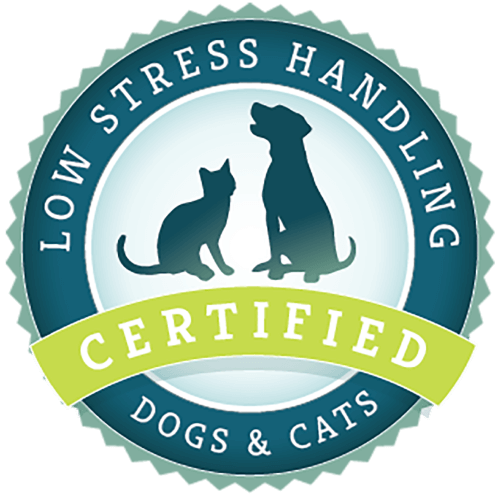What article are you looking for?
Category: I am a Trainer
Desensitizing Your Dog to a Muzzle
Why use a muzzle? Comfortably wearing a muzzle is a great skill for any dog to have. Chances are it will be necessary to wear one at some point during their life. The veterinary hospital is the most common place a muzzle may be needed. Some veterinary procedures are painful and having a dog who is comfortable wearing a muzzle is beneficial. Acute abdominal pain, trauma (such as a broken leg), or back pain are examples of issues an owner may encounter at home with their dog that can be extremely painful. Any dog has the potential to bite and
Teaching Eye Contact to a Dog
Eye contact teaches your pet to focus attention on you and check in with you regularly. By reinforcing this behavior, you are making yourself more exciting than the environment around you. Eye contact should be a fun activity for your dog. With practice, your dog will look to you for guidance, no matter the surroundings.
Leash Reactivity in Dogs
Reactivity is a dog’s response to something in their environment which is triggered by anxiety, fear, or frustration. As much as reactivity can occur in different environments, it is commonly observed when a dog is restricted to being on leash. There is no quick fix when it comes to reducing leash reactivity. Have patience for your dog and the learning process.
Training Series: Target Training Dogs with Touch
Targeting is teaching your dog to touch a part of their body such as a paw, shoulder, hip, or nose to a specific object. The most common use is asking the dog to touch their nose to a person’s hand. Teach and practice this behavior in the house first. Then around your yard, and on walks where the environment is naturally more distracting.
Nail Boards: An Alternative to Clipping Nails
Many dogs do not like having their nails trimmed and some are outright petrified. Dogs can be taught to file their own nails using a nail board. Dogs learn to scratch on the board using a scratching or digging motion. Nail boards can be purchased or hand made using a board, duct tape, and coarse or medium sandpaper. Learning to use the Nail Board Dogs learn quickly how to use a nail board with minimal training. You shape the behavior by breaking down the completed behavior of scratching the board into smaller steps, rewarding your dog for completing each step.
Preparing for Mat Training: Setting the Mood
Uses Teaching your pet to go to a mat (stationing) can be used to: give him space (a portable safe haven) from visitors and create his own “go to” spot. keep him out of the kitchen during mealtimes or from counter surfing. take the mat to the veterinarian and station him for exams and weighing. station him for medicating at home. station him for grooming. Setting the environment up for success. Before you even start doing mat work with your pet, make sure the surrounding area is set up for success. Minimize any potential distractions for both of you:

Low Stress Handling® Silver-Level Certification
Individual Certification at this level demonstrates to clients and employers the individual’s dedicated interest in Low Stress Handling®. Hospital Certification at this level demonstrates to clients and staff the hospital’s commitment to appropriately training staff in Low Stress Handling® methods.
Learn More
